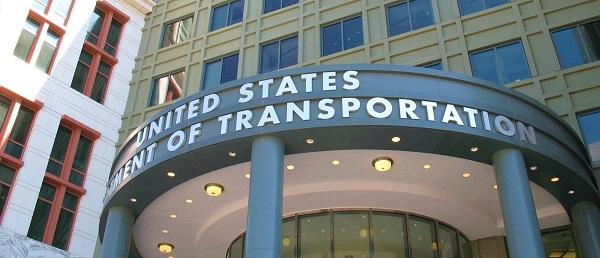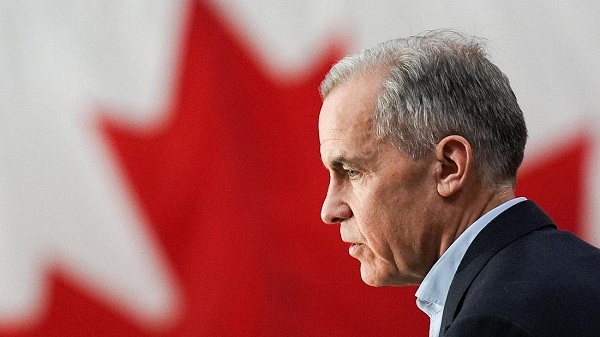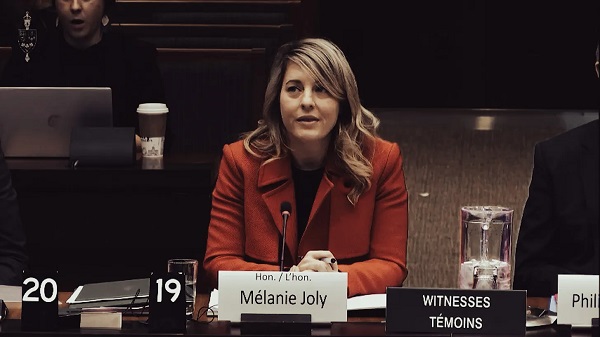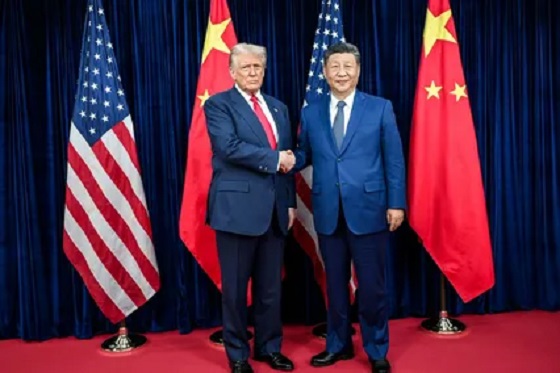Uncategorized
Pelosi poised to become House speaker, making history

WASHINGTON — Nancy Pelosi knew this moment would come, even if others had their doubts — or worked to stop her.
Pelosi is poised to be elected Thursday as House speaker, the only woman who has held the office and now one of few elected officials who will be returning to it. The last time a speaker regained the gavel was more than a half-century ago.
The California Democrat has spent her political career being underestimated, only to prove the naysayers wrong. In this case, it was by winning back the Democratic majority and amassing the votes for the speaker’s job.
“None of us is indispensable,” Pelosi told The Associated Press on the campaign trail last fall, “but I do know that I’m very good at what I do.”
In accepting the gavel, Pelosi will give a nod to the new era of divided government with a pledge to “reach across the aisle in this chamber and across the divisions in this great nation,” according to excerpts of her prepared remarks Thursday.
“The floor of this House must be America’s Town Hall: where the people will see our debates and where their voices will be heard and affect our decisions,” she says.
In previewing Democratic priorities, she talks about lowering health care costs, investing in green infrastructure and “restoring integrity” to government.
“We must be champions of the middle class and all those who aspire to it — because the middle class is the backbone of democracy,” she says.
Pelosi remains a highly polarizing figure, vilified by Republicans as a San Francisco liberal and a caricature of big government. But she is also a mother of five and a grandmother of nine who has shattered glass ceilings to become one of the most powerful politicians of the 21st century.
With President Donald Trump in the White House and Republicans still controlling the Senate, Pelosi’s return to the speaker’s office to lead a Democratic majority with its biggest freshmen class since Watergate shakes up the dynamic in Washington even beyond the new era of divided government.
Pelosi has faced pressure from some incoming Democrats who have been willing to talk about the possibility of impeachment proceedings against Trump. Pelosi has called impeachment a “divisive activity,” and Democrats were cautious about mentioning the “I” word during the 2018 midterms for fear it would backfire politically.
But Pelosi did not shy away from it Thursday in an interview airing on NBC’s “Today” show.
“We shouldn’t be impeaching for a political reason, and we shouldn’t avoid impeachment for a political reason,” she said, adding that she would wait for the findings of special counsel Robert Mueller’s investigation into Russia meddling in the 2016 election.
Only the House can begin impeachment proceedings. And while Justice Department guidelines suggest a sitting president can’t be indicted, Pelosi called that “an open discussion.”
“Everything indicates that a president can be indicted after he is no longer president,” she said.
Trump himself has denied any wrongdoing.
Pelosi is one of the few congressional leaders who seem to understand Trump, both being children from famous families now primed for deal-making. Trump appreciates strong characters, and, in perhaps a sign of respect, she is one of the few congressional leaders in Washington he has not given a nickname — though he has made her a frequent target.
Pelosi’s return to the speaker’s office was not guaranteed. A core group of rank-and-file Democrats has hungered for new leadership, saying it’s time for a new generation to take the helm. They tired of the Republican attack ads featuring Pelosi that are constantly run against them back home, and they worried she would be a drag on efforts to keep the majority in the next election. They enlisted some of the newcomers from the freshmen class to their ranks to try to stop her from regaining the gavel.
But one by one, Pelosi peeled away the skeptics, flipping “no” votes to the “yes” column, sometimes in a matter of days. Some were given lead positions on their legislative priorities, even a gavel of their own to chair special panels.
And Pelosi gave a little, too, promising, at 78, to serve no more than four years in leadership, making way for the next generation.
It’s unclear what the final tally will be when votes for speaker are counted Thursday as the first act of the new Democratic majority.
“She’ll be more than fine,” said Rep. Hakeem Jeffries of New York, the incoming chairman of the Democratic caucus.
Jeffries said when he told his family that, because of his new position, he may be the one to put Pelosi’s name forward during the nomination proceeding, his youngest son said, “Don’t blow the moment, Dad.”
___
Follow Mascaro on Twitter at https://twitter.com/lisamascaro
Lisa Mascaro, The Associated Press
Uncategorized
Trump Admin Establishing Council To Make Buildings Beautiful Again


From the Daily Caller News Foundation
By Jason Hopkins
The Trump administration is creating a first-of-its-kind task force aimed at ushering in a new “Golden Age” of beautiful infrastructure across the U.S.
The Department of Transportation (DOT) will announce the establishment of the Beautifying Transportation Infrastructure Council (BTIC) on Thursday, the Daily Caller News Foundation exclusively learned. The BTIC seeks to advise Transportation Secretary Sean Duffy on design and policy ideas for key infrastructure projects, including highways, bridges and transit hubs.
“What happened to our country’s proud tradition of building great, big, beautiful things?” Duffy said in a statement shared with the DCNF. “It’s time the design for America’s latest infrastructure projects reflects our nation’s strength, pride, and promise.”
“We’re engaging the best and brightest minds in architectural design and engineering to make beautiful structures that move you and bring about a new Golden Age of Transportation,” Duffy continued.
Mini scoop – here is the DOT’s rollout of its Beautifying Transportation Infrastructure Council, which will be tasked with making our buildings beautiful again. pic.twitter.com/
9iV2xSxdJM — Jason Hopkins (@jasonhopkinsdc) October 23, 2025
The DOT is encouraging nominations of the country’s best architects, urban planners, artists and others to serve on the council, according to the department. While ensuring that efficiency and safety remain a top priority, the BTIC will provide guidance on projects that “enhance” public areas and develop aesthetic performance metrics.
The new council aligns with an executive order signed by President Donald Trump in August 2025 regarding infrastructure. The “Making Federal Architecture Beautiful Again” order calls for federal public buildings in the country to “respect regional architectural heritage” and aims to prevent federal construction projects from using modernist and brutalist architecture styles, instead returning to a classical style.
“The Founders, in line with great societies before them, attached great importance to Federal civic architecture,” Trump’s order stated. “They wanted America’s public buildings to inspire the American people and encourage civic virtue.”
“President George Washington and Secretary of State Thomas Jefferson consciously modeled the most important buildings in Washington, D.C., on the classical architecture of ancient Athens and Rome,” the order continued. “Because of their proven ability to meet these requirements, classical and traditional architecture are preferred modes of architectural design.”
The DOT invested millions in major infrastructure projects since Trump’s return to the White House. Duffy announced in August a $43 million transformation initiative of the New York Penn Station in New York City and in September unveiledmajor progress in the rehabilitation and modernization of Washington Union Station in Washington, D.C.
The BTIC will comprise up to 11 members who will serve two-year terms, with the chance to be reappointed, according to the DOT. The task force will meet biannually. The deadline for nominations will end Nov. 21.
Uncategorized
New report warns WHO health rules erode Canada’s democracy and Charter rights

The Justice Centre for Constitutional Freedoms has released a new report titled Canada’s Surrender of Sovereignty: New WHO health regulations undermine Canadian democracy and Charter freedoms. Authored by Nigel Hannaford, a veteran journalist and researcher, the report warns that Canada’s acceptance of the World Health Organization’s (WHO) revised International Health Regulations (IHR) represents a serious erosion of national independence and democratic accountability.
The IHR amendments, which took effect on September 19, 2025, authorize the WHO Director-General to declare global “health emergencies” that could require Canada to follow directives from bureaucrats in Geneva, bypassing the House of Commons and the will of Canadian voters.
The WHO regards these regulations as “binding,” despite having no ability or legal authority to impose such regulations. Even so, Canada is opting to accept the regulations as binding.
By accepting the WHO’s revised IHR, the report explains, Canada has relinquished its own control over future health crises and instead has agreed to let the WHO determine when a “pandemic emergency” exists and what Canada must do to respond to it, after which Canada must report back to the WHO.
In fact, under these International Health Regulations, the WHO could demand countries like Canada impose stringent freedom-violating health policies, such as lockdowns, vaccine mandates, or travel restrictions without debate, evidence review, or public accountability, the report explains.
Once the WHO declares a “Pandemic Emergency,” member states are obligated to implement such emergency measures “without delay” for a minimum of three months.
Importantly, following these WHO directives would undermine government accountability as politicians may hide behind international “commitments” to justify their actions as “simply following international rules,” the report warns.
Canada should instead withdraw from the revised IHR, following the example of countries like Germany, Austria, Italy, Czech Republic, and the United States. The report recommends continued international cooperation without surrendering control over domestic health policies.
Constitutional lawyer Allison Pejovic said, “[b]y treating WHO edicts as binding, the federal government has effectively placed Canadian sovereignty on loan to an unelected international body.”
“Such directives, if enforced, would likely violate Canadians’ Charter rights and freedoms,” she added.
Mr. Hannaford agreed, saying, “Canada’s health policies must be made in Canada. No free and democratic nation should outsource its emergency powers to unelected bureaucrats in Geneva.”
The Justice Centre urges Canadians to contact their Members of Parliament and demand they support withdrawing from the revised IHR to restore Canadian sovereignty and reject blind compliance with WHO directives.
-

 Business2 days ago
Business2 days agoTrump’s Tariffs Have Not Caused Economy To Collapse
-

 Alberta1 day ago
Alberta1 day agoAlberta government’s plan will improve access to MRIs and CT scans
-

 Daily Caller2 days ago
Daily Caller2 days agoTrump Reportedly Planning Ground Troops, Drone Strikes On Cartels In Mexico
-

 Brownstone Institute2 days ago
Brownstone Institute2 days agoBizarre Decisions about Nicotine Pouches Lead to the Wrong Products on Shelves
-

 International2 days ago
International2 days agoHours after Trump’s warning, Nigerian Christians massacred by Islamist gunmen
-

 Economy1 day ago
Economy1 day agoWelcome to the Energy Humanist Club! Bill Gates breaks the moral monopoly against fossil fuels
-

 Business1 day ago
Business1 day agoCarney government’s first budget should signal end to crippling ‘climate’ policies
-

 Business1 day ago
Business1 day agoNo Jobs Clause: Liberals Under Fire Over Stellantis Deal in Fiery Committee Showdown










